Daniyal Amir Awan
Real-Time GPU-Accelerated Machine Learning Based Multiuser Detection for 5G and Beyond
Jan 14, 2022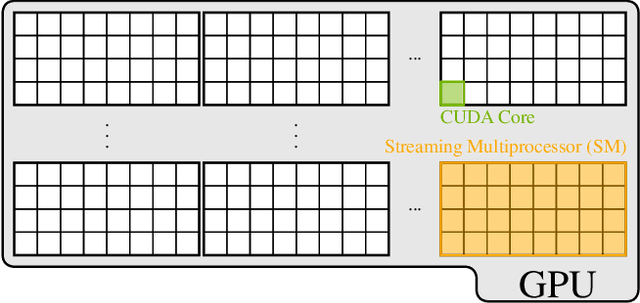
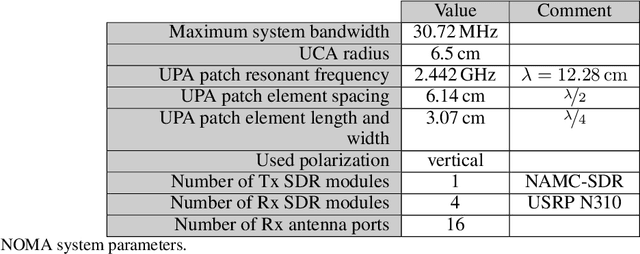
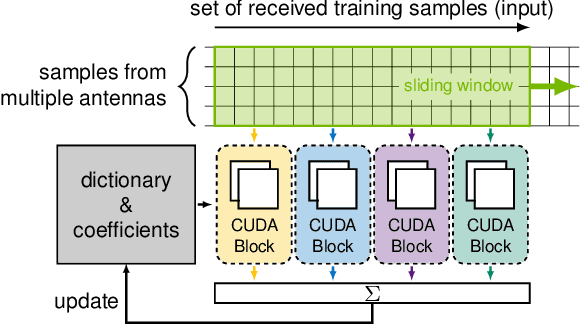
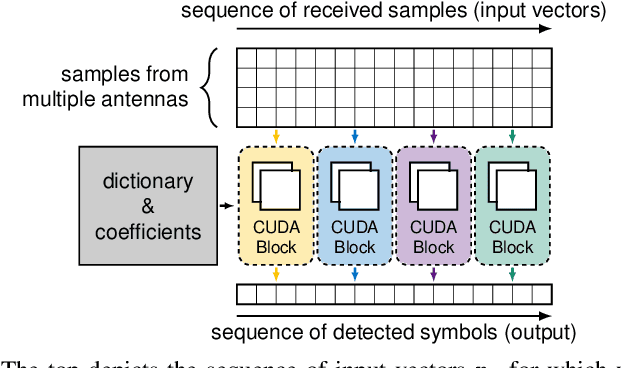
Abstract:Adaptive partial linear beamforming meets the need of 5G and future 6G applications for high flexibility and adaptability. Choosing an appropriate tradeoff between conflicting goals opens the recently proposed multiuser (MU) detection method. Due to their high spatial resolution, nonlinear beamforming filters can significantly outperform linear approaches in stationary scenarios with massive connectivity. However, a dramatic decrease in performance can be expected in high mobility scenarios because they are very susceptible to changes in the wireless channel. The robustness of linear filters is required, considering these changes. One way to respond appropriately is to use online machine learning algorithms. The theory of algorithms based on the adaptive projected subgradient method (APSM) is rich, and they promise accurate tracking capabilities in dynamic wireless environments. However, one of the main challenges comes from the real-time implementation of these algorithms, which involve projections on time-varying closed convex sets. While the projection operations are relatively simple, their vast number poses a challenge in ultralow latency (ULL) applications where latency constraints must be satisfied in every radio frame. Taking non-orthogonal multiple access (NOMA) systems as an example, this paper explores the acceleration of APSM-based algorithms through massive parallelization. The result is a GPU-accelerated real-time implementation of an orthogonal frequency-division multiplexing (OFDM)-based transceiver that enables detection latency of less than one millisecond and therefore complies with the requirements of 5G and beyond. To meet the stringent physical layer latency requirements, careful co-design of hardware and software is essential, especially in virtualized wireless systems with hardware accelerators.
Robust Cell-Load Learning with a Small Sample Set
Mar 21, 2021



Abstract:Learning of the cell-load in radio access networks (RANs) has to be performed within a short time period. Therefore, we propose a learning framework that is robust against uncertainties resulting from the need for learning based on a relatively small training sample set. To this end, we incorporate prior knowledge about the cell-load in the learning framework. For example, an inherent property of the cell-load is that it is monotonic in downlink (data) rates. To obtain additional prior knowledge we first study the feasible rate region, i.e., the set of all vectors of user rates that can be supported by the network. We prove that the feasible rate region is compact. Moreover, we show the existence of a Lipschitz function that maps feasible rate vectors to cell-load vectors. With these results in hand, we present a learning technique that guarantees a minimum approximation error in the worst-case scenario by using prior knowledge and a small training sample set. Simulations in the network simulator NS3 demonstrate that the proposed method exhibits better robustness and accuracy than standard multivariate learning techniques, especially for small training sample sets.
* Published in IEEE Transactions on Signal Processing ( Volume: 68)
Set-Theoretic Learning for Detection in Cell-Less C-RAN Systems
Mar 21, 2021
Abstract:Cloud-radio access network (C-RAN) can enable cell-less operation by connecting distributed remote radio heads (RRHs) via fronthaul links to a powerful central unit. In conventional C-RAN, baseband signals are forwarded after quantization/ compression to the central unit for centralized processing to keep the complexity of the RRHs low. However, the limited capacity of the fronthaul is thought to be a significant bottleneck in the ability of C-RAN to support large systems (e.g. massive machine-type communications (mMTC)). Therefore, in contrast to the conventional C-RAN, we propose a learning-based system in which the detection is performed locally at each RRH and only the likelihood information is conveyed to the CU. To this end, we develop a general set-theoretic learningmethod to estimate likelihood functions. The method can be used to extend existing detection methods to the C-RAN setting.
Detection for 5G-NOMA: An Online Adaptive Machine Learning Approach
Jan 11, 2018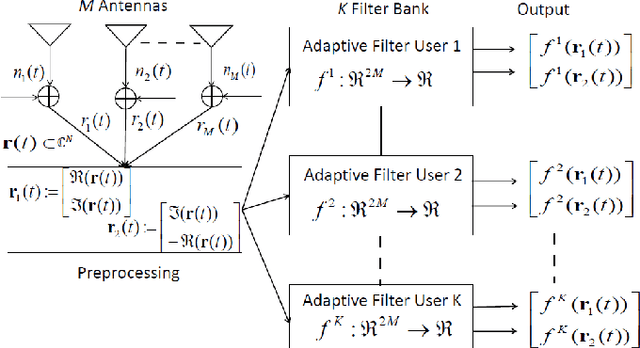
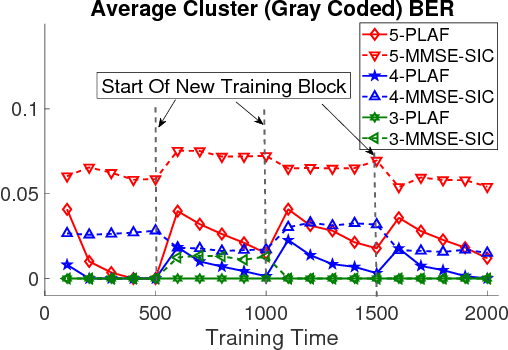

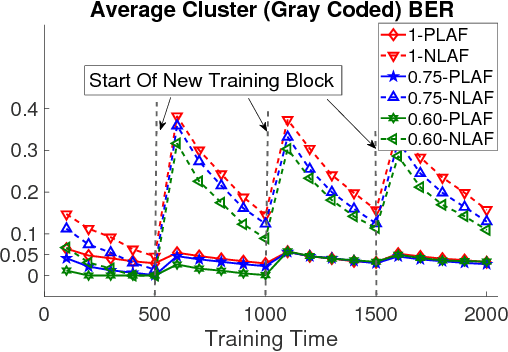
Abstract:Non-orthogonal multiple access (NOMA) has emerged as a promising radio access technique for enabling the performance enhancements promised by the fifth-generation (5G) networks in terms of connectivity, low latency, and high spectrum efficiency. In the NOMA uplink, successive interference cancellation (SIC) based detection with device clustering has been suggested. In the case of multiple receive antennas, SIC can be combined with the minimum mean-squared error (MMSE) beamforming. However, there exists a tradeoff between the NOMA cluster size and the incurred SIC error. Larger clusters lead to larger errors but they are desirable from the spectrum efficiency and connectivity point of view. We propose a novel online learning based detection for the NOMA uplink. In particular, we design an online adaptive filter in the sum space of linear and Gaussian reproducing kernel Hilbert spaces (RKHSs). Such a sum space design is robust against variations of a dynamic wireless network that can deteriorate the performance of a purely nonlinear adaptive filter. We demonstrate by simulations that the proposed method outperforms the MMSE-SIC based detection for large cluster sizes.
 Add to Chrome
Add to Chrome Add to Firefox
Add to Firefox Add to Edge
Add to Edge